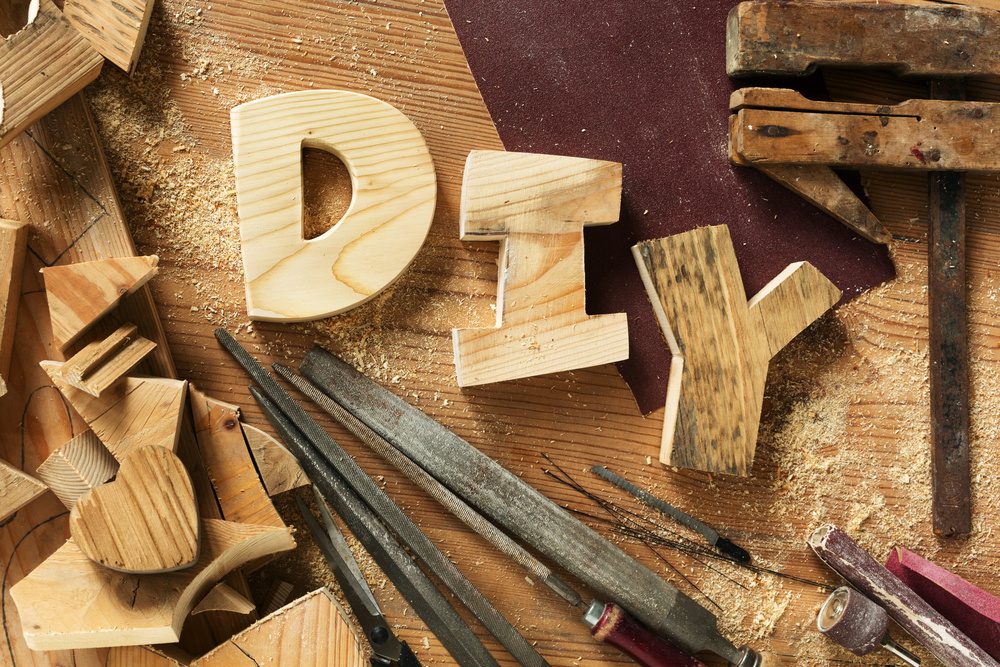
Have you ever wondered what DIY projects you should do on long weekends? This post would discuss some DIY ideas to help you pass the time while breathing sustainability into your house. Here are six basic ways to make your DIY projects more sustainable:

-
Upcycle What You Have
Look around to see if there’s any equipment that may be recycled elsewhere in your home. Some items such as plumbing fittings, doors, and room heaters can be recycled, especially if they need just a tweak to be operational.
For example, you may have some excellent brass hardware in the corner of your garage. Most likely, the hardware is old, but a fresh coat of eco-friendly paint would give it a revitalized contemporary appeal. Furthermore, if you need to replace a roof, you may easily upcycle asphalt shingles that are still in perfect shape for a shed roof.
Check your basement for that antiquated twin bed frame, dust it off, and turn it into a romantic sofa by adding more bedding, coverings, and throw pillows. There’s always something new on the market regarding kitchen equipment, and chances are you’ve purchased a plethora of beautiful dishes you rarely use. Instead of tossing them away, why not turn them into a wall display? This will also provide you with additional storage space in your kitchen cabinets.
-
Switch To Solar Energy
Solar technology is becoming more preferred than traditional energy sources. Outdoor solar generators, for example, are ecologically friendly and play a vital part in attaining sustainable development energy solutions. Furthermore, you won’t have to worry about power outages when you need them the most. Also, you’ll be doing your part to limit the usage of fossil fuels and other destructive energy sources.
-
Recycle Correctly
When you finish a DIY project, especially a restoration task, you’ll throw away many things, including items that are no longer in use such as electrical equipment. However, remember that various types of materials require different types of maintenance. Metals, for example, must be scrubbed and categorized before being disposed of as garbage since not all metals may be disposed of or sold together. Keep in mind that clean metals can be quite valuable.
Concerning refrigerants and compounds, before devices are reprocessed for components, coolants and compounds must be removed. Uncontaminated refrigerants can be swapped—simply return them to a wholesaler. On the other hand, you need to find a facility to recycle contaminated refrigerants. Contact a local recycling store for refrigerants and compounds to ensure that such recyclables fit the standards of state and municipal authorities.
-
Opt For Deconstruction Over Demolition
Home remodels are inevitable, and the unfortunate thing about renovating is that many people favor demolitions since it’s the easiest way to create a clean slate. It may seem satisfying to demolish a wall, but it’s inefficient and can even release toxic elements into the atmosphere such as asbestos.
Consider deconstruction over destruction as an option. Deconstruction implies taking a second look at the materials and determining what may be given away or recycled such as electrical containers and copper wiring. In contrast, demolition entails sending everything to a landfill, including the rubbish.
-
Go For Sustainable Materials
DIY projects allow you to become acquainted with the products being utilized without being bound by the timetable of a contractor. So, before you start building a deck or work surface, search for durable and long-lasting materials. Recycled paperwork surfaces, for example, are super thick, durable, and beautiful. Bamboo grows quickly, is naturally sustainable, and is extremely resilient, making it ideal for decks and floor surfaces.
-
Repurpose Construction Materials
Upcycling extends beyond repurposing hardware or an old twin bed frame. Scrap wood doesn’t have to be thrown away; it can be chipped and put as a layer on the surface of soil or ground cover. Furthermore, broken and de-papered gypsum can be reused in small amounts to improve soil physical qualities such as water retention. Bedding, bricks, composite material, and building materials can be reused to make access to roads or driveways.
Final Thoughts
DIY projects have several advantages. They’re mentally stimulating, allow you to put your skills to use, put your patience to the test, and enable you to save money. If you want to take your fulfillment to the next level, why not strive to make something that’s self-made and sustainable? The six practical DIY projects listed above are less wasteful with resources, are sustainable, and allow you to upcycle appropriately.
